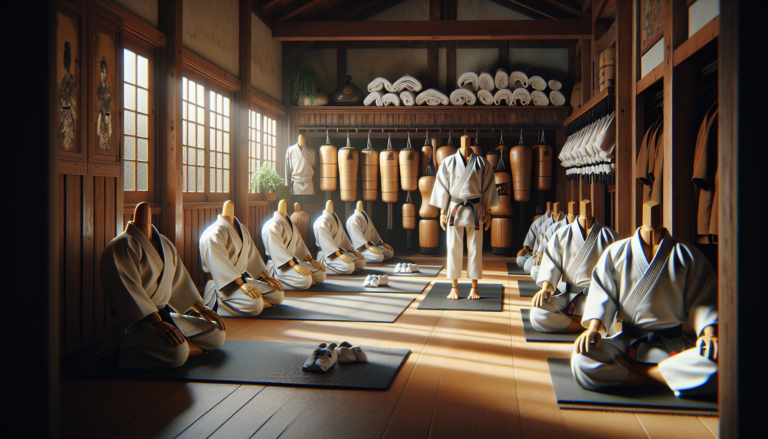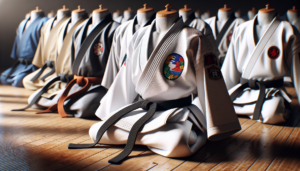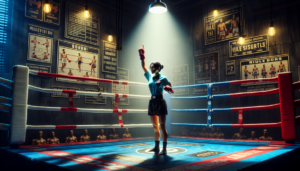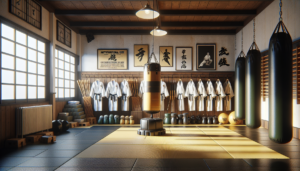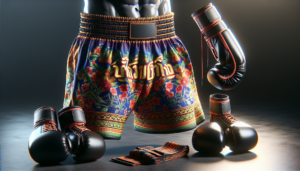Introduction to Goju-Ryu Karate
Goju-Ryu Karate is a captivating and powerful martial art that has stood the test of time. As one of the oldest karate styles, it embodies a rich history and a unique blend of hard and soft techniques. Whether you’re a martial arts enthusiast or simply curious about this fascinating discipline, exploring the world of Goju-Ryu Karate is a journey worth embarking upon.
What is Goju-Ryu Karate?
At its core, Goju-Ryu Karate is a martial arts system that seeks to achieve harmony between opposing forces. The name itself reflects this philosophy, with “go” meaning hard and “ju” meaning soft. By seamlessly integrating these contrasting elements, Goju-Ryu practitioners develop a well-rounded skill set that encompasses strength, fluidity, and adaptability.
The style’s roots can be traced back to Okinawa, specifically the city of Naha. It incorporates traditional Okinawan techniques while also drawing heavy influence from Chinese martial arts, particularly Kempo. This unique fusion gives Goju-Ryu its distinct flavor and effectiveness.
Origins of Goju-Ryu Karate
The birth of Goju-Ryu Karate can be attributed to the visionary master Kanryo Higaonna. Recognized as the highest authority in Naha-Te, a local Okinawan martial art, Higaonna played a pivotal role in shaping the foundation of what would later become Goju-Ryu.
Building upon Higaonna’s legacy, his disciple Chojun Miyagi further refined and formalized the style. Miyagi’s dedication to standardizing techniques and introducing Goju-Ryu to the Japanese mainland solidified its place as a prominent karate system. Today, practitioners worldwide continue to embody the principles and traditions laid down by these legendary masters.
Techniques of Goju-Ryu Karate
Basic Techniques
Goju-Ryu Karate encompasses a comprehensive range of techniques that form the bedrock of a practitioner’s skill set. From powerful strikes to fluid circular movements, each technique serves a specific purpose in combat.
Fundamental stances, such as Sanchin and Neko Ashi Dachi, provide stability and balance, allowing practitioners to generate substantial power from their lower body. Hand techniques, including punches, knife-hands, and palm strikes, are delivered with precision and speed.
Kicking techniques in Goju-Ryu are equally diverse, ranging from low kicks targeting the legs to high kicks aimed at the head. Each kick is executed with a focus on proper form, timing, and power generation.
Advanced Techniques
As practitioners progress in their Goju-Ryu journey, they delve into more advanced techniques that further enhance their combat proficiency. Grappling and throwing techniques, reminiscent of the style’s Bujutsu roots, add a new dimension to the practitioner’s arsenal. These techniques allow for close-range engagements and provide options for controlling and subduing an opponent.
The integration of Ibuki, a specialized breathing technique, is another hallmark of advanced Goju-Ryu practice. By synchronizing breath with movement, practitioners gain heightened focus, power, and endurance. This mind-body harmony is a key aspect of mastering the art.
Self-Defense Applications
Goju-Ryu Karate is not merely a sport or a form of exercise; it is a practical system for self-defense. The techniques learned in the dojo are designed to be applicable in real-world situations where personal safety is at stake.
Through scenario-based training and Jiyu-Kumite (free sparring), practitioners develop the ability to adapt their techniques to dynamic and unpredictable circumstances. The emphasis on close-range fighting and effective movement transitions equips practitioners with the tools necessary to defend themselves against various types of attacks.
| Technique Category | Key Elements |
|---|---|
| Stances | Stability, balance, power generation |
| Hand Techniques | Precision, speed, diverse strikes |
| Kicking Techniques | Proper form, timing, power |
| Grappling & Throwing | Close-range control, subduing opponent |
| Ibuki Breathing | Focus, power, endurance, mind-body harmony |
History of Goju-Ryu Karate
Founding of Goju-Ryu Karate
The roots of Goju-Ryu Karate can be traced back to the old Naha-Te martial art practiced in Okinawa. Kanryo Higaonna, a prominent figure in Naha-Te, played a significant role in the style’s development. He incorporated elements from both Okinawan and Chinese martial arts, particularly from Kempo, laying the groundwork for what would later become Goju-Ryu.
It was Higaonna’s disciple, Chojun Miyagi, who formally established Goju-Ryu as a distinct style. Miyagi dedicated himself to standardizing the techniques and principles he learned from Higaonna. He further refined the system, emphasizing the balance between hard and soft techniques, and introduced Goju-Ryu to the Japanese mainland.
Influential Masters
Throughout its history, Goju-Ryu Karate has been shaped by the contributions of several influential masters. Following in the footsteps of Chojun Miyagi, masters such as Gogen Yamaguchi continued to propagate and refine the style.
Yamaguchi, often referred to as “The Cat” due to his swift and agile movements, played a vital role in popularizing Goju-Ryu in Japan. His charisma and dedication attracted a large following, and he established numerous dojos across the country.
Other notable masters include Meitoku Yagi, Seikichi Toguchi, and Seiko Higa, each leaving their mark on the style through their unique insights and teachings. Their collective efforts have helped preserve the rich heritage of Goju-Ryu and ensure its continued practice worldwide.
Benefits of Practicing Goju-Ryu Karate
Physical Benefits
Engaging in Goju-Ryu Karate training offers a multitude of physical benefits. The rigorous training regimen helps develop strength, endurance, and flexibility. Practitioners experience improved cardiovascular health, increased muscle tone, and enhanced coordination.
The dynamic movements and techniques in Goju-Ryu promote better balance and body control. As practitioners hone their skills, they develop lightning-fast reflexes and the ability to generate powerful strikes with precision.
Mental and Emotional Benefits
Beyond the physical aspects, Goju-Ryu Karate also nurtures mental and emotional well-being. The discipline required in training cultivates focus, concentration, and mental resilience. Practitioners learn to stay calm under pressure and develop a heightened sense of situational awareness.
The challenges faced in the dojo forge a strong character and instill self-confidence. As practitioners overcome obstacles and progress in their training, they experience a sense of accomplishment and personal growth. The supportive community found within Goju-Ryu dojos fosters camaraderie and lifelong friendships.
Philosophical Insights
Goju-Ryu Karate is not merely a physical practice; it is a way of life. The style is rooted in deep philosophical principles that guide practitioners both inside and outside the dojo. The concept of balance, represented by the interplay of hard and soft techniques, extends beyond the realm of combat and into daily life.
Practitioners learn to embrace challenges with a resilient spirit, understanding that growth often lies in the face of adversity. The emphasis on respect, humility, and self-improvement instills values that transcend the martial arts and shape practitioners into well-rounded individuals.
Conclusion
Goju-Ryu Karate is a martial art that offers a profound journey of self-discovery and personal development. With its rich history, versatile techniques, and philosophical underpinnings, it continues to captivate practitioners worldwide.
Whether you seek to enhance your physical prowess, strengthen your mental fortitude, or cultivate a harmonious way of life, Goju-Ryu provides a path worth exploring. By embracing the principles of hard and soft, practitioners embark on a transformative journey that extends far beyond the walls of the dojo.
As you delve into the world of Goju-Ryu Karate, you become part of a legacy that spans generations. You join a community of dedicated individuals who share a passion for personal growth, self-defense, and the pursuit of excellence. So, take that first step, don your gi, and embark on a lifelong adventure in the way of Goju-Ryu Karate.

